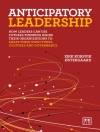In Case Study Research, Bill Lee and Mark Saunders describe the properties of case study designs in organizational research, exploring the uses, advantages and limitations of case research. They also demonstrate the flexibility that case designs offer, and challenges the myths surrounding this approach.
Ideal for Business and Management students reading for a Master’s degree, each book in the series may also serve as reference books for doctoral students and faculty members interested in the method.Part of SAGE’s Mastering Business Research Methods Series, conceived and edited by Bill Lee, Mark N. K. Saunders and Vadake K. Narayanan and designed to support students by providing in-depth and practical guidance on using a chosen method of data collection or analysis.
विषयसूची
1. Introduction to Case Studies
2. Understanding Case Studies
3. Basic Components of Case Studies
4. Conducting Case Studies
5. Examples of Orthodox & Emergent Case Studies
6. Conclusions
Glossary
लेखक के बारे में
Mark N. K. Saunders is a professor of Business Research Methods and director of Ph D Programmes at Birmingham Business School, University of Birmingham, UK. His research interests include research methods, in particular participant selection and methods for understanding intraorganizational relationships, trust and organizational learning, and small business success. He has published in journals such as British Journal of Management, Field Methods, Human Performance, Human Relations, Journal of Small Business Management, Management Learning, Social Science and Medicine, and Annals of Tourism Research. He has coauthored a number of books including Research Methods for Business Students (currently in its 8th edition) and, with Bill Lee Conducting Case Studies for Business and Management. He is the joint editor with Bill Lee and Vadake Narayanan of SAGE’s Understanding Research Methods for Business and Management Students book series and editor for Edward Elgar’s Handbooks of Research Methods series.











